Usually if you want to see a specific landmark or sight, you can just go there and see it, right? Well that’s not exactly the case if you want to see the Northern Lights. The Northern Lights aren’t just a tourist attraction that you can take a tour to, pose for a few selfies and SnapChats, then leave and go post them on Instagram. They’re a natural phenomenon, known as the Aurora Borealis, which are created at random due to particles colliding into each other, and only seen if the conditions are right.
That means you can’t predict exactly when or where they will be, just like you really can’t always predict the weather. But like the weather forecast, you can get a good idea of what may happen by monitoring real-time radar information like cloud movement and temperature. There’s a few more things that go into guessing when and where they’ll be, and knowing them may give you a better chance at planning your chase! For instance, I knew the best time to see them was in the winter when it’s dark, and that Northern Norway was notorious for sightings, so although a few people thought I was crazy, I headed up to Tromsø where I was lucky to see one of the most spectacular Northern Light shows they had seen all year!
I asked my tour guide/owner of Chasing Lights, Thomas how he decides where they’ll chase each night, and when people would have the highest chance of seeing them, here’s what I found out:
Jump To:
1. You Should Aim to Go Somewhere Near the Arctic Circle
Imagine a little contact lens that sits on top of the Earth; now imagine the rim of it that passes through Greenland, Canada, Iceland, Norway, and some parts of Sweden, Finland, and Russia. That’s what’s known as the Arctic Circle, and that’s where your best locations are for seeing the Northern Lights. When I say “the best”, I’m referring to the statistical probabilities, I’m not just saying it because I got to see them in Tromsø. It’s possible to see them further south, but that takes a lot more guessing.
Tromsø actually has the highest success rate of seeing the Northern Lights, and that’s because it not only lays on the exact latitude that the Arctic Circle runs through, but also because it’s possible to drive inland away from the coastal climate if there’s clouds.
2. While Possible to See Them Year Round, Winter is Best

Since most places in the Arctic Circle have 24 hours of sun light half of the year, and you need darkness to see a glowing cloud, it might make it a bit difficult to see the Northern Lights if you try to go in “spring” or “summer”. In the winter, there’s a period where the Arctic has partial or full darkness, which of course means it’s going to be really cold, but a better chance for you to see the Northern Lights.
The “best” time range to see the Northern Lights is from September to the end of January, however I went the first week of February and still saw a spectacular show. Again, remember that this is only part of various aspects to consider when chasing the Northern Lights, and that for the most part it all depends on chance!
3. You Have to Be As Far From City Lights as Possible
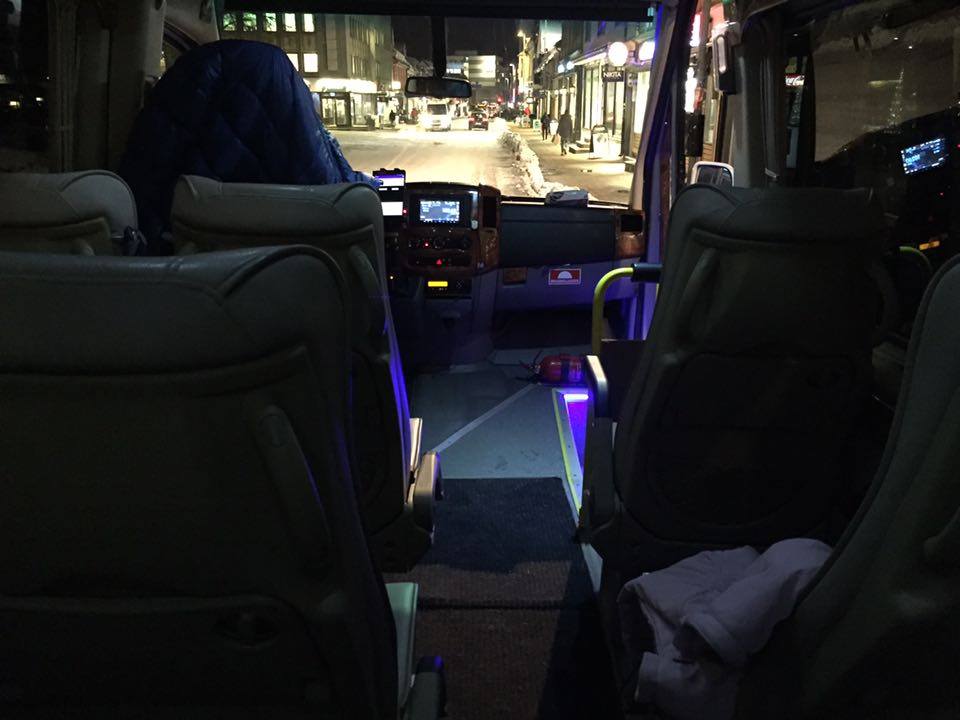
It would be really cool if you could just look outside your window, or step outside your hotel and see the beautiful green glowing Northern Lights, wouldn’t it? Unfortunately there’s absolutely no chance of seeing them unless you go far away from the “light pollution” of any town or city. I realized that about a week before my trip to Norway, when I was still thinking I was just going to hike a little bit until I found somewhere dark to catch the glow.
HA! Yeah freaking right! Not only did I not fully know how cold it was going to be, but I had no idea where the hell to even go, or how to get to a dark place that would be even colder. That’s why you need to take a tour, even if you don’t really like tours. I normally don’t like tours but after taking one, I know there’s a 0% chance I would have seen the Northern Lights on my own. We drove about an hour south east from Tromsø the first night, and all the way across the Finland border the second night!
4. The Colder it is, the Better
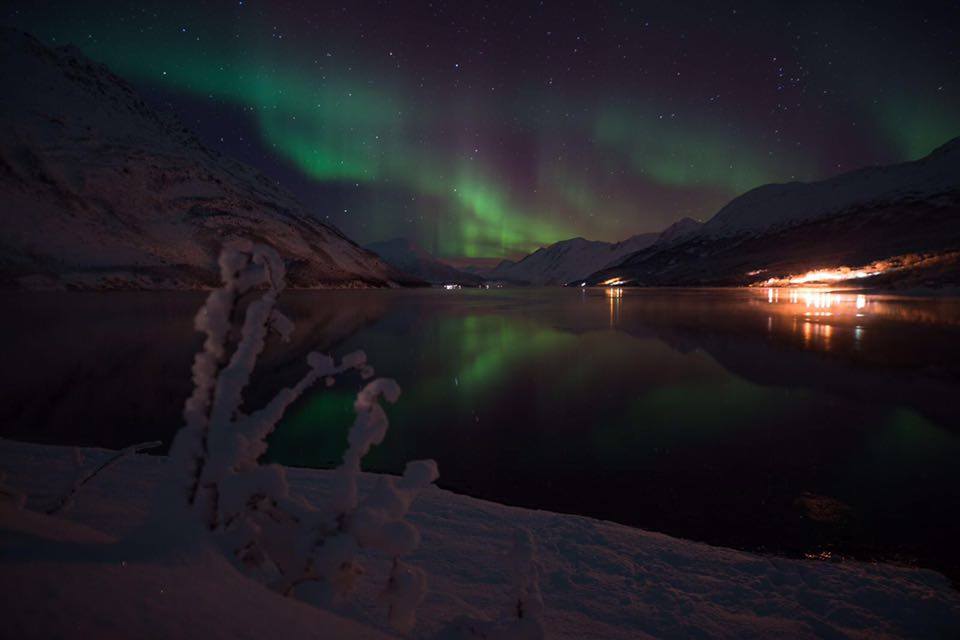
Finally, one of my seemingly insane ideas paid off! Despite knowing that I’d miss seeing various landscapes of Norway that I’ve been dying to see, I still knew that the only way I’d see the Northern Lights would be if it was cold outside. And by cold, I mean freezing. Thomas verified that the colder it is outside, the better the chance for seeing the lights, and he wasn’t just saying that to make us feel better.
I learned about this cold water clarity when I went snorkeling between two continents in Iceland. The guides there explained that the colder the water is, the higher the clarity, which is because the molecules are more tightly bound together, giving less obstruction to your view. The same applies to air when it’s cold; it holds less water vapor, which means there’s less water molecules obstructing your view! Thank god my Bachelor of Science degree in Biology and Chemistry has finally come in handy!
5. Avoid Clouds, Although “Gaps” Are Possible
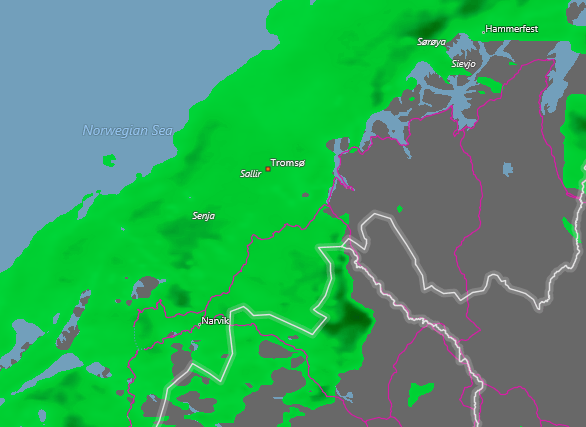
Here’s another thing I didn’t think about; the weather. I assumed that if I went to Norway while it was dark and freezing, I’d automatically get to see the Northern Lights. Well, the dark and freezing part is only the part you can control by booking your trip during the winter. The other part is keeping track of the weather. If it’s overcast, snowing, or doing any other sort of weather activity that causes blockage in the sky, it’s harder to see the Northern Lights.
Check the weather leading up to your trip, and the radar before you head out on your chase. Thomas and the guides at Chasing Lights constantly check the radar, and use it to determine where each night’s chase is. If it’s cloudy near the coast, they’ll head inland where it’s more clear, but the whole time they check it to see if and where other locations clear up.
6. Ignore KP-index & “Prediction” Sites
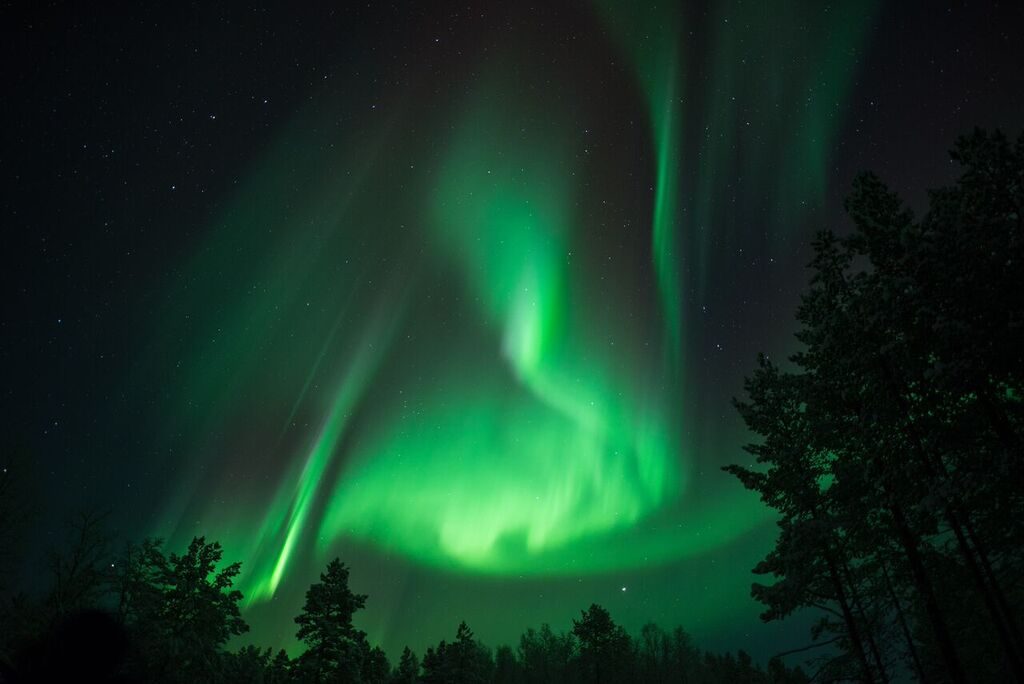
I had never heard of this KP index number before, but Thomas kept mentioning how it has absolutely no relevance when it comes to predicting the Northern Lights unless you’re trying to track them somewhere much further south. He said in Tromsø they see the Northern Lights even with a KP index of 0 if there’s activity, so if people think a KP index of 2 is bad, they’re wrong.
As for the websites and apps that claim to be able to predict the Northern Lights, while fun to look at, Thomas also suggests that they aren’t accurate. It makes sense again if you consider the probability of the weather actually doing what it’s predicted to do, and while there’s a chance it could be right, it’s better to look at the current radar and sky cams.
7. You Can Still See Them With a Full Moon

All of this talk about darkness may raise some questions about the light from the moon. It sure did for me, which is why I wanted to go during a new moon (no moon). But Thomas told me that the moonlight doesn’t ruin your chances of seeing the Northern Lights. In fact, he showed me a few photos he took of trips when the moon actually looked really beautiful with the Northern Lights in the foreground. I personally don’t think they look as bright with a bright moon, so maybe that’s something to consider when booking your trip.
8. Use a Sky Camera Monitor
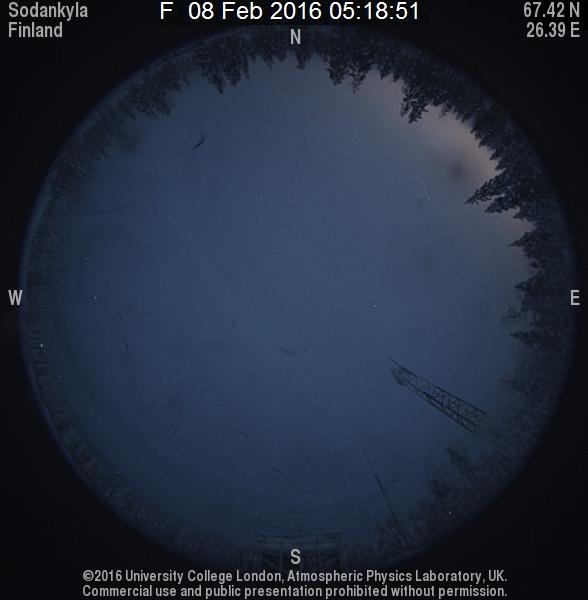
While you can’t really predict where and when the Northern Lights will be, there are in fact sky cameras installed in various places throughout the world that show real time activity of the Northern Lights. Well…maybe not actual footage…you can’t just log on and watch videos of the Northern Lights…but they show where the skies are clearest, and if you’re skilled enough you may be able to see where those pale gray clouds are, that are actually Aurora Borealis’.
My tour guides used a sky cam monitor app on their phones (the bus was equipped with Wifi, YAY!) during our chases to monitor activity even as we drove, and they were so good at it that we were able to pull over on the side of the road several times to hop out and see the lights!
9. Always Keep Low Expectations But a Positive Attitude

One thing that Thomas and his colleagues kept telling me even before I got to Norway, is to remember that there’s always a chance of seeing the Northern Lights, but it’s never guaranteed. This is because many people travel far and wide to see the Northern Lights, and become disappointed if they’re let down. He warned me ahead of time that despite the photos I’ve seen, they usually don’t look like that in real life, and tend to look rather like pale green clouds to the naked eye.
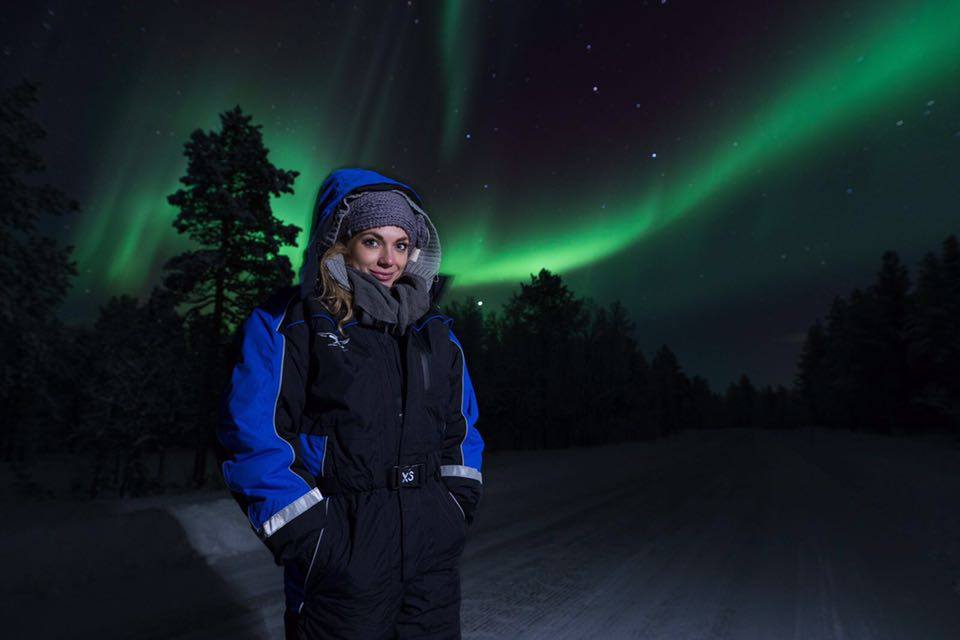
I’ll admit that the first Northern Lights I saw fit his description accordingly, however an hour later they were bursting and dancing all around us and considered to be one of the strongest, and most spectacular Northern Lights shows of the season!
10. Be Prepared for Weather and Photos
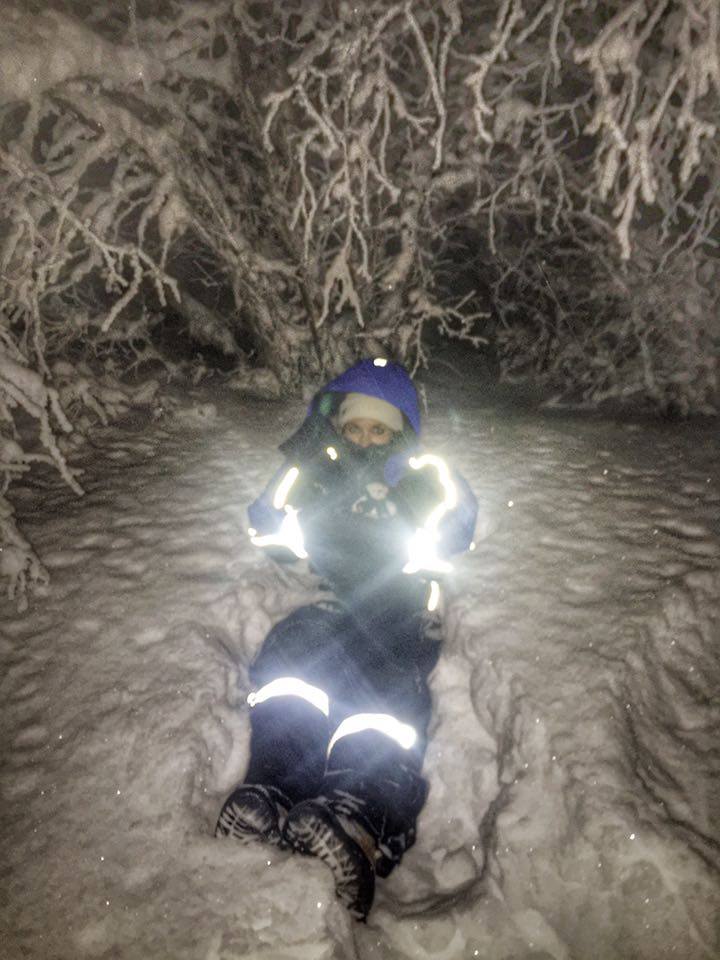
It probably goes without saying that if you’re going to go out at night in the Arctic winter, you need to dress warm. I’ll skip over that part, but please, wear wool underwear and a lot of layers. If you go on a tour like I did, they’ll also give you snow shoes and a snow suit, but if you aren’t used to extreme cold, bring some extra jackets, hats, gloves, and even hand warmers.
Secondly, keep in mind that you can’t just take photos of the Northern Lights with your iPhone, GoPro, or digital camera. No one told me this and I expected to go out and get my own photos, but there was no way I could have. You need a DSLR camera with a long exposure and wide lens to photograph the Northern Lights on your own. I didn’t have one, so luckily the Chasing Lights guides took photos for me, but either way you need to be prepared by making sure you have a company like mine who also offers photography, or by being ready with camera settings and equipment at all times, because the Northern Lights can appear and disappear at any moment!



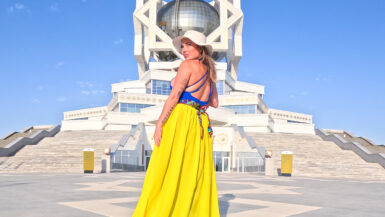
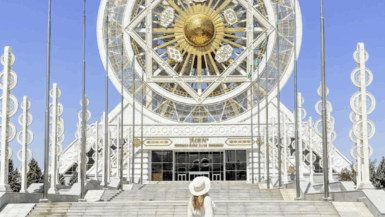
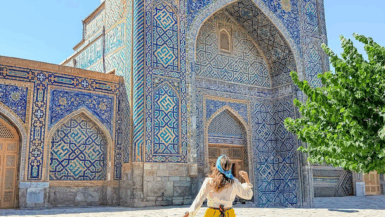
Love this guide! I didn’t know about the DLSR requirement! After searching I found out online that you can take a Gopro shot of the Northern lights using these settings:
Mode: Night Lapse
Shutter = 30 sec
Interval = Continuous
MP = 12MP Wide
Spot Meter = OFF
Protune = ON
White Balance = 3000K
ISO Limit = 800
Sharpness = High
Thanks for the info!
Awesome tips! I never knew that you needed a special camera, lens, and settings to picture Aurora’s Lights!
“keep in mind that you can’t just take photos of the Northern Lights with your iPhone, GoPro, or digital camera. No one told me this and I expected to go out and get my own photos, but there was no way I could have. You need a DSLR camera with a long exposure and wide lens to photograph the Northern Lights on your own.
Not exactly. There are apps for phones now that enable to you take photos and many point and shoot digital cameras where you can adjust the exposure will work just fine with a tripod. Sure a fancy DSLR with a wide angle lens, and a tripod, will get you much better pictures but they aren’t required to get pictures.
Excellent article about viewing northern light, I agree about even Kp index is low you could see northern light but the intensity is not strong. If possible stay 3 or 4 days to be sure to observe strong aurora.